Technology moves at a relentlessly fast pace in the modern world. It can sometimes feel like every single day there are new technologies and innovations that will change our futures forever. But in a steady stream of announcements about new massive futuristic technological upgrades and cool gadgets, it is easy to lose track of the amazing ways the world is progressing.
For instance, there are artificial intelligence programs writing poems from scratch and making images from nothing more than a worded prompt. There are 3D-printed eyes, new holograms, lab-grown food and brain-reading robots.
All of this just scratches the surface of what is out there, so we've curated a guide to the most exciting future technologies, listing them all below.
Necrobotics
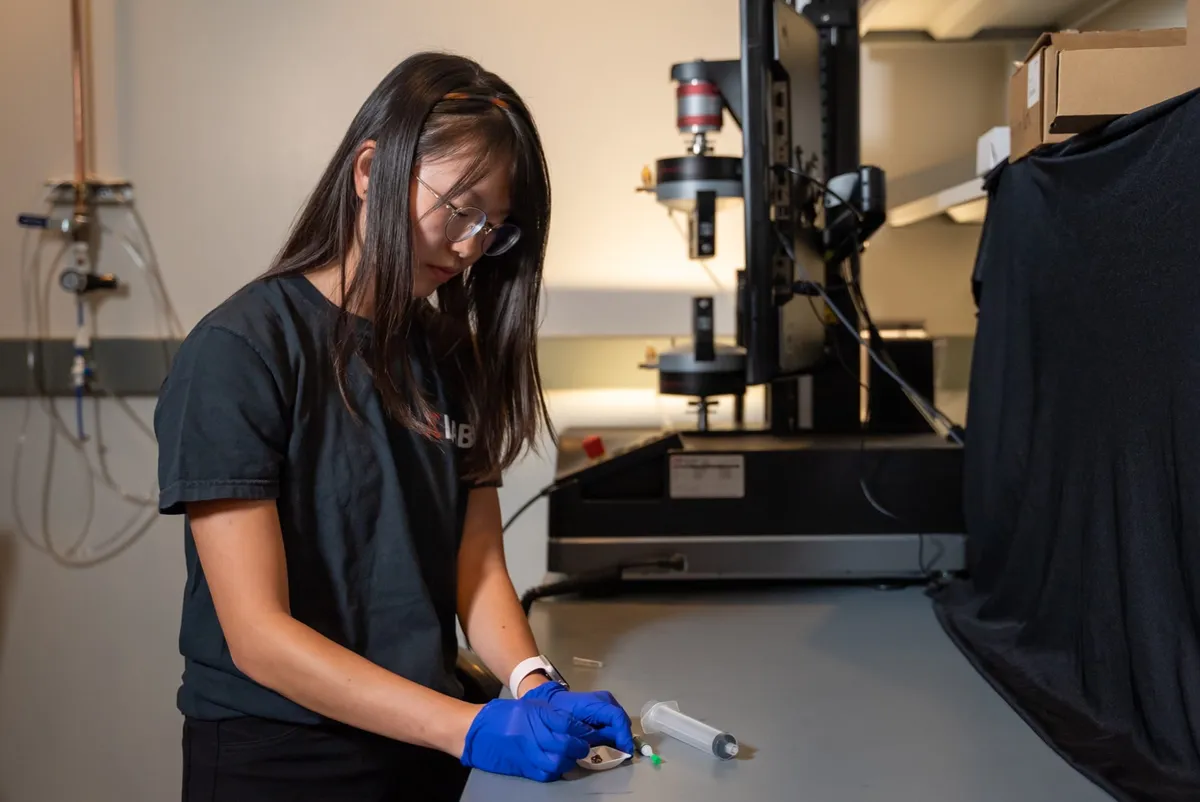
Sometimes new future technologies can offer amazing development, with the possibility of changing the future... while also being incredibly creepy.
This is one way to describe the idea of necrobotics which, as the name suggests, involves turning dead things into robots. While this sounds like a plot to a creepy horror film, this is a technology being explored at Rice University.
A team of researchers turned a dead spider into a robot-like gripper, given the ability to pick up other objects. To achieve this, they take a spider and inject it with air. This works because spiders use hydraulics to force their version of blood (haemolymph) into their limbs, making them extend.
Right now this concept is in its infant stages, but it could mean a future where dead animals are used to further science... it all feels very Frankeinstein-like!
Sand batteries

Not every technology bettering our future has to be complicated, some are simple, yet extremely effective.
One of these kind of technologies has come from some Finnish engineers who have found a way to turn sand into a giant battery.
These engineers piled 100 tons of sand into a 4 x 7 metre steel container. All of this sand was then heated up using wind and solar energy.
This heat can then be distributed by a local energy company to provide warmth to buildings in nearby areas. Energy can be stored this way for long periods of time.
All of this occurs through a concept known as resistive heating. This is where a material is heated by the friction of electrical currents.
Sand and any other non-super conductor are warmed by the electricity passing through them generated heat than can be used for energy.
E-skin could help us hug long-distance friends
While modern technology allows us to communicate verbally and visually almost anywhere in the world, there is currently no reliable method of sharing the sense of touch across long distances. Now, a wireless soft e-skin developed by engineers at the City University of Hong Kong could one day make giving and receiving hugs over the internet a reality.
The e-skin is studded with flexible actuators that sense the wearer’s movements and convert them into electrical signals. These signals can then be sent to another e-skin system via Bluetooth, where the actuators convert them into mechanical vibrations that mimic the initial movements. The system could be used to allow friends and family to ‘feel’ each other over long distances, the researchers say.
Smelly VR
Researchers at the City University of Hong Kong (CityU) recently invented what they're calling a 'novel, wireless, skin-interfacedolfactory feedback system'. In other words, VR attachments that let you smell stuff.
The smells are generated by the devices heating and melting odorous wax that releases adjustable concentrations of stink. There are two versions of this tech. One is 'mounted' on your upper lip for easy access to your nostrils, and the other is a facemask-like design with hundreds of different odour combinations.
The university said their new tech has a broad range of applications that includes online teaching and 4D movie watching. That's right, in the future, you'll not only be able to watch your favourite movies in VR, you'll also be able to smell them. Now that's immersion!
Catapulting satellites into space
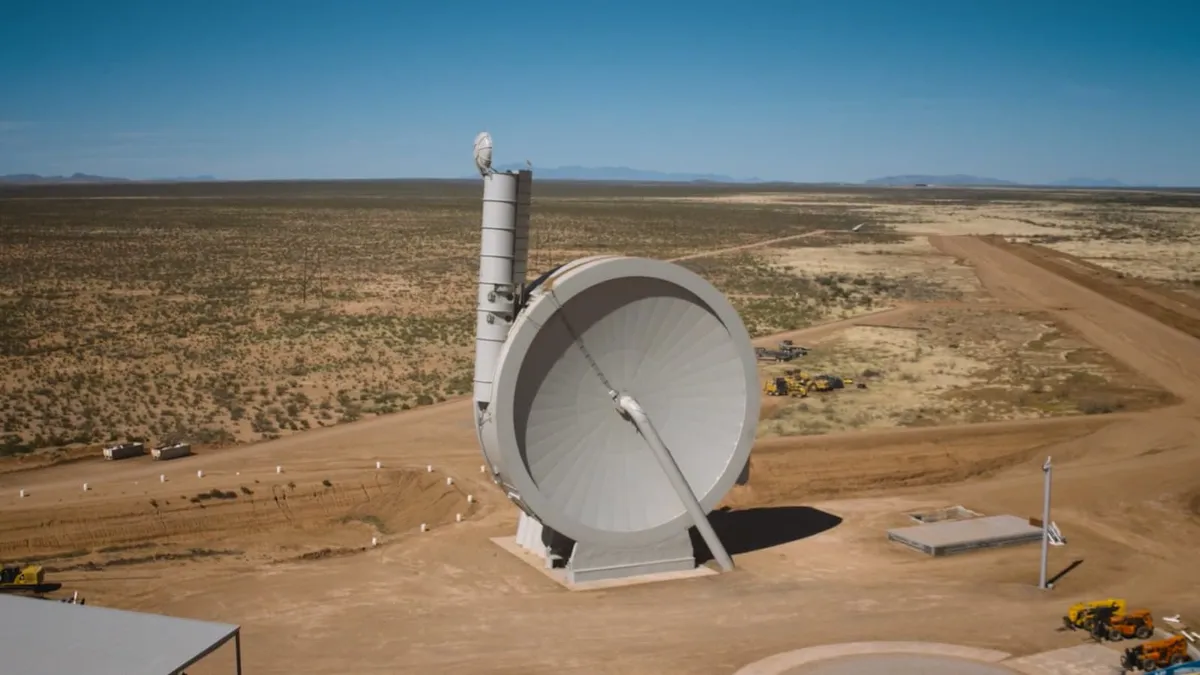
Who would have thought the best way to get satellites into space was with a makeshift catapult! Okay, it is a lot smarter than a catapult but the technology exists in a similar way.
SpinLaunch is a prototype system for getting satellites or other payloads up into space. It does this by using kinetic energy instead of the usual technique of using chemical fuel found in traditional rockets. This technology could be capable of spinning payloads at 8,000km/h and 10,000G, then launching them skyward through a large launch tube.
Of course, small rocket engines will still be required for payloads to reach orbit, but SpinLaunch has claimed this system cuts down on the fuel and infrastructure by an impressive 70 per cent.
The company has signed an agreement with NASA and is now testing the system.
Xenotransplantation
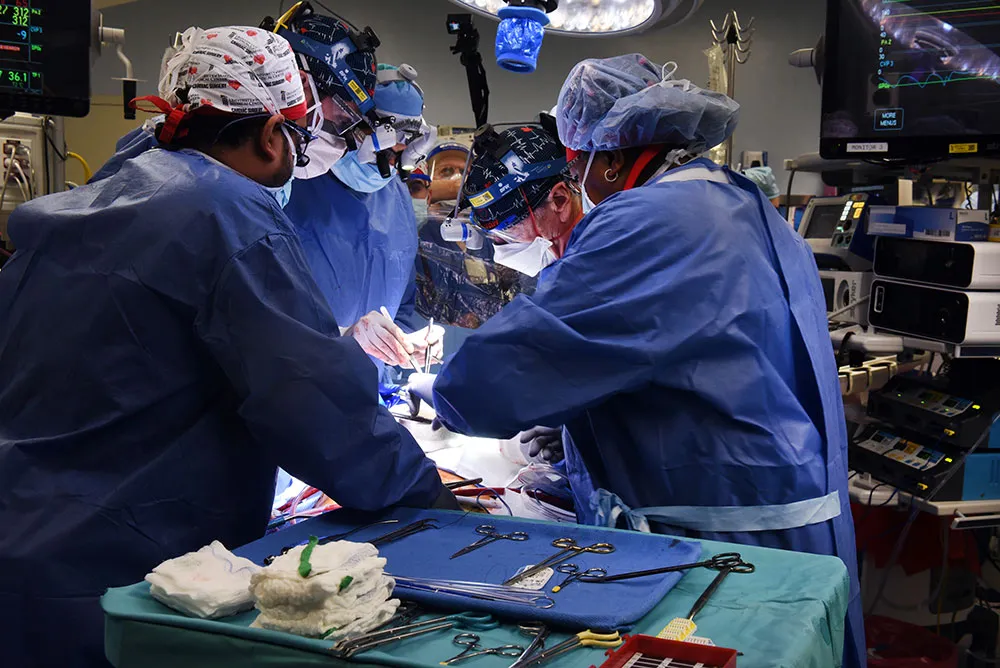
Inserting the heart of a pig into a humanfeels like a bad idea, and yet, this is one of the latest medical procedures that is seeing rapid progress.
Xenotransplantation - the procedure of transplanting, implementing or infusing a human with cells, tissues or organs from an animal source - has the potential to revolutionise surgery.
One of the most common procedures performed so far is the insertion of a pig's heart into a human. This has now successfully happened twice. However, one of the patients was only alive for a few months, and the second is still being observed.
In these surgeries, the heart cannot be instantly put into a human, gene-editing needs to take place first. Certain genes need to be knocked out of the heart and human genes need to be added, mainly around immune acceptance and genes to prevent excessive growth of heart tissue.
Right now, these surgeries are risky and there is no certainty around success. However, in the near future, we could see xenotransplants happening on a regular basis, providing hearts or tissues from animals to humans in need of it.
AI image-generation
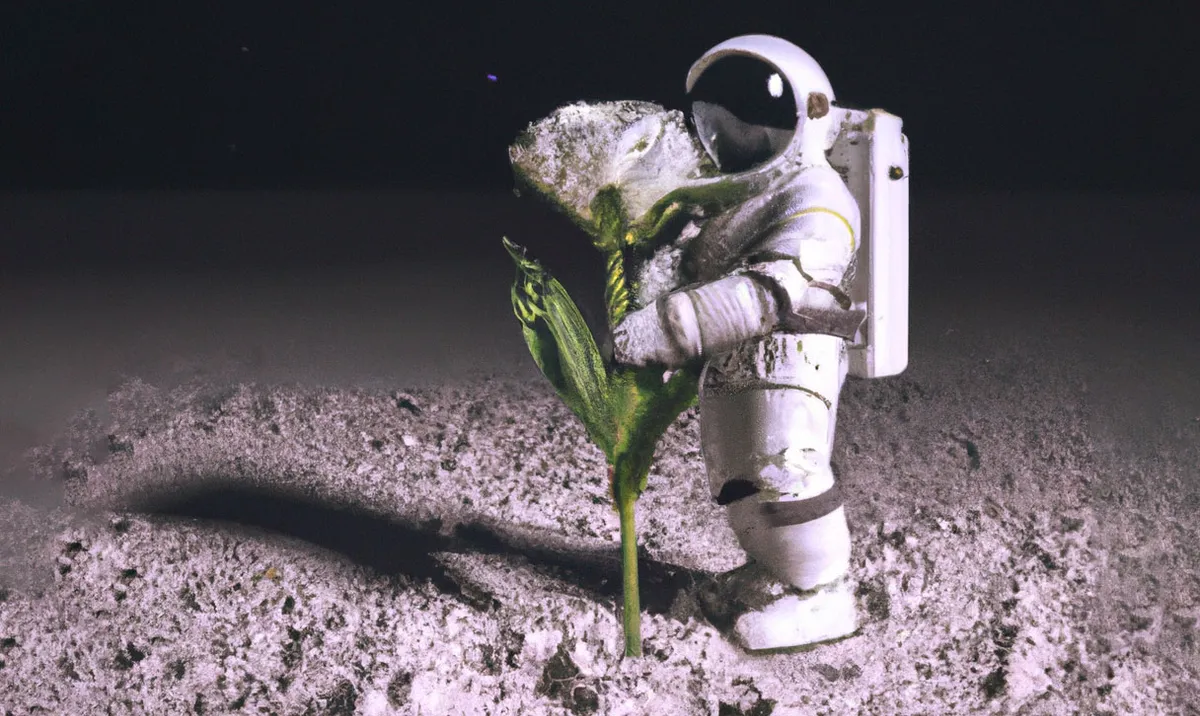
As artificial intelligence continues to perform jobs just as well as humans, there is a new industry to add to the list – the world of art. Researchers at the company OpenAI have created a software that is able to create images from just worded prompts.
Type in ‘a dog wearing a cowboy hat singing in the rain’ and you’ll get a host of completely original images that fit that description. You can even choose what style of art your request will come back in. However, the technology isn't perfected and still has issues, like when we gave it poor prompts on designing cartoon characters.
This technology known as Dall-E is now its second iteration and the team behind it plans to continue developing it further. In the future, we could see this technology used to create art exhibitions, for companies to get quick, original illustrations or of course, to revolutionise the way we create memes on the internet.
There is also technology known as Midjourney, a AI image generator that creates gothic masterpieces with a simple text prompt. We are truly living in the future.
Brain reading robots
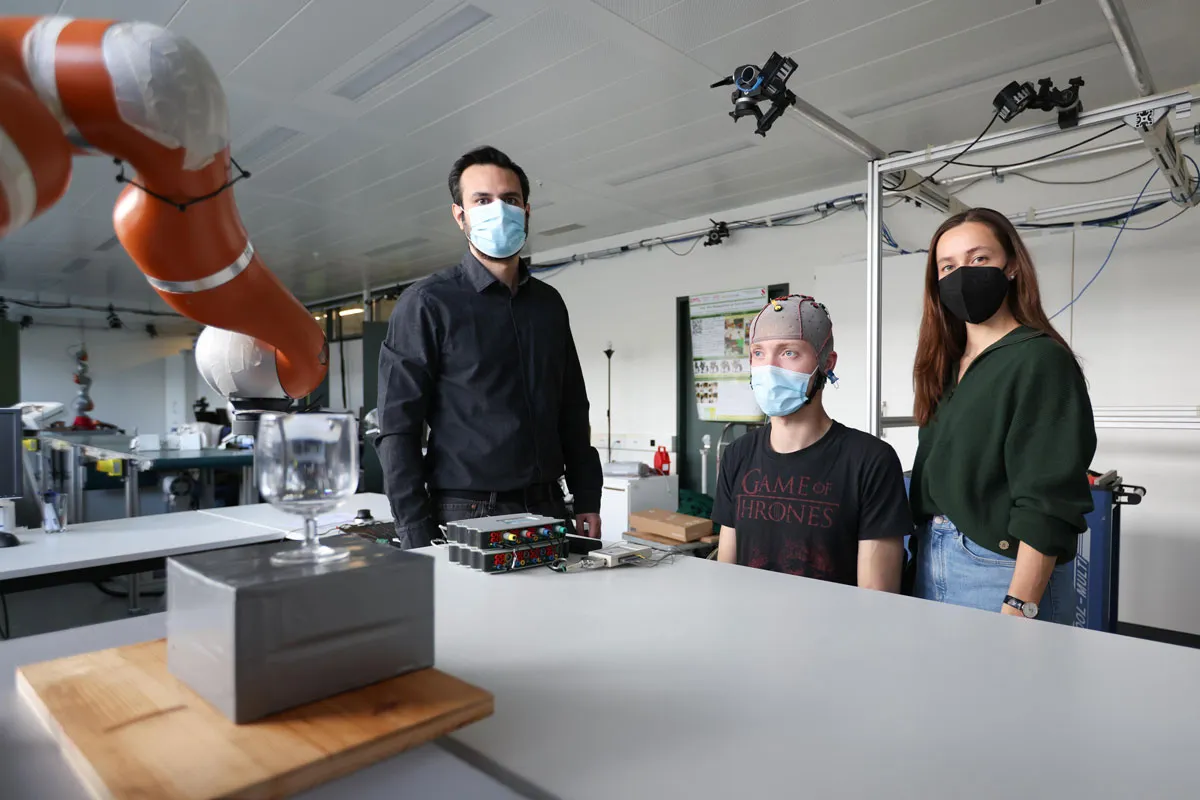
No longer a science fiction trope, the use of brain reading technology has improved hugely in recent years. One of the most interesting and practical uses we’ve seen tested so far comes from researchers at the Swiss Federal Institute of Technology Lausanne (EPFL).
Thanks to a machine-learning algorithm, a robot arm and a brain-computer interface, these researchers have managed to create a means for tetraplegic patients (those who can’t move their upper or lower body) to interact with the world.
In tests, the robot arm would perform simple tasks like moving around an obstacle. The algorithm would then interprets signals from the brain using an EEG cap and automatically determine when the arm had made a move that the brain considered incorrect, for example moving too close to the obstacle or going too fast.
Over time the algorithm can then adjust to the individuals preferences and brain signals. In the future this could lead to wheelchairs controlled by the brain or assistance machines for tetraplegic patients.
3D printed bones
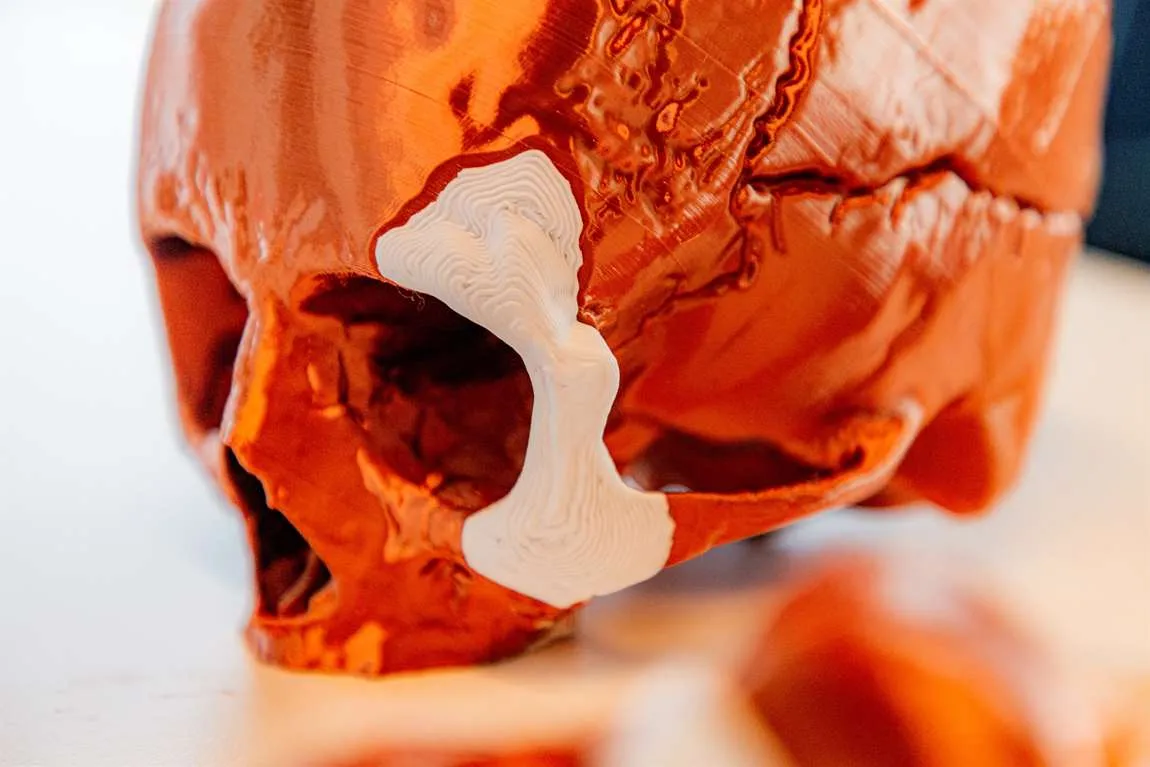
3D printing is an industry promising everything from cheap house building through to affordable rugged armour, but one of the most interesting uses of the technology is the building of 3D printed bones.
The company Ossiform specialises in medical 3D printing, creating patient-specific replacements of different bones from tricalcium phosphate – a material with similar properties to human bones.
Using these 3D printed bones is surprisingly easy. A hospital can perform an MRI which is then sent to Ossiform who create a 3D model of the patient-specific implant that is needed. The surgeon accepts the design and then once it is printed, it can be used in surgery.
What is special about these 3D printed bones is that because of the use of tricalcium phosphate, the body will remodel the implants into vascularised bone. That means they will enable the full restoration of function that the bone it is replacing had. To achieve the best integration possible, the implants are of a porous structure and feature large pores and canals for cells to attach to and reform bone.
3D-printed food that takes the cake

What’s for dinner tonight? Soon it could be a piece of 3D-printed, laser-cooked cake. Researchers at Columbia University School of Engineering have created a device that can construct a seven-ingredient cheesecake using food inks and then cook it to perfection using a laser.
Their creation contained banana, jam, peanut butter and Nutella. Tasty. The technology could one day be used to create personalised meals for everyone from professional athletes to patients with dietary conditions, or could be useful for those who are simply short on time.
Natural language Processing
Natural language processing is the big new trend taking over the internet. While you've most likely seen it in use in Google's autocomplete software, or when your smartphone offers a prediction of what you are trying to type, it is capable of much smarter things.
OpenAI is a company that is at the forefront of artificial intelligence, originally taking the internet by storm with its image generator Dall-E 2. Now it is back, making a chatbot known as ChatGPT, creating poems from scratch, explaining complex theories with ease and having full-length conversations like it is a human.
ChatGPT is powered by a software known as GPT-3, trained on billions of examples of texts, then taught how to form coherent and logical sentences.
ChatGPT is an example of AI and its future. It has proven its ability to make completely new websites from scratch, write entire length books and even make jokes... although, it clearly still hasn't mastered humour yet.
Boom-free supersonic flight
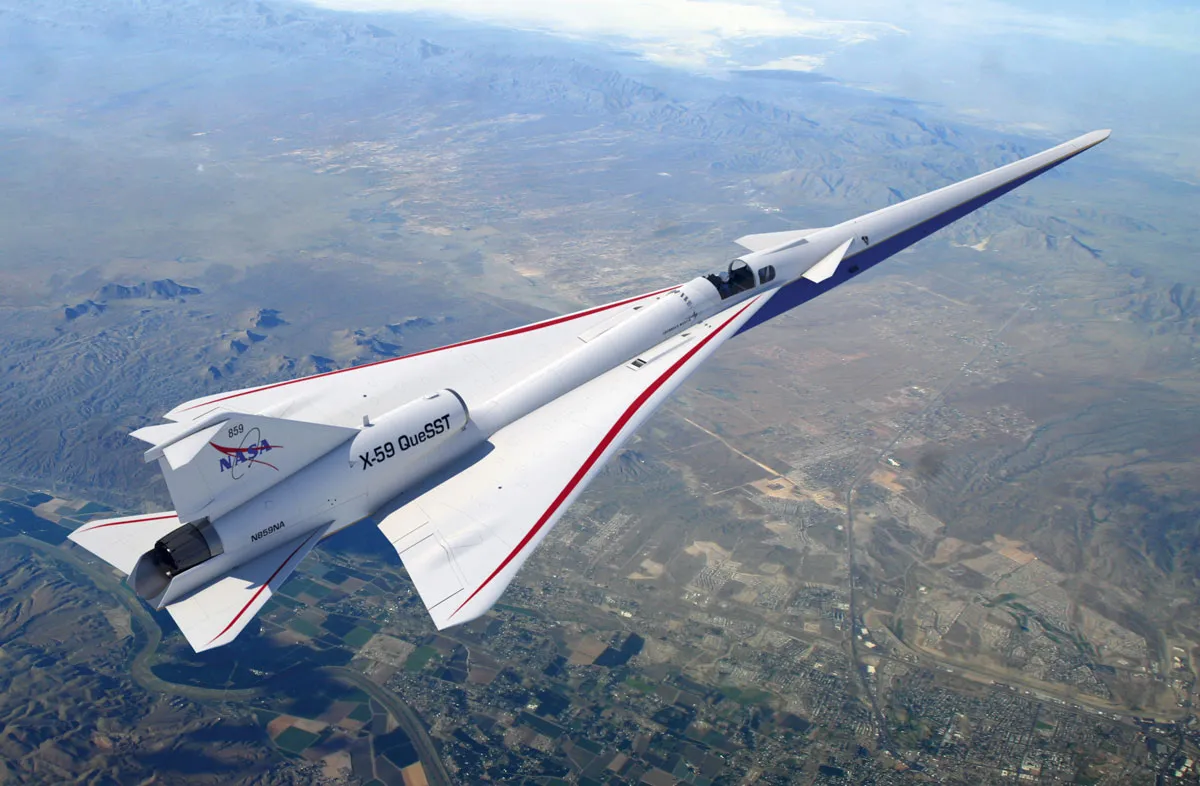
NASA’s X-59 ‘quiet’ supersonic aircraft is set to take to the skies for its first test flight at the Armstrong Flight Research Center later this year. The plane is currently being assembled in a hangar at Lockheed Martin’s Skunk Works facility in Palmdale, California.
Its fuselage, wings and tail have been specially designed to control the airflow around the plane as it flies, with the ultimate aim of preventing a loud sonic boom from disturbing people on the ground below when it breaks the sound barrier. If the initial test goes to plan, the space agency aims to carry out further test flights over inhabited areas to gauge the public’s response to aircraft in 2024.
Digital "twins" that track your health
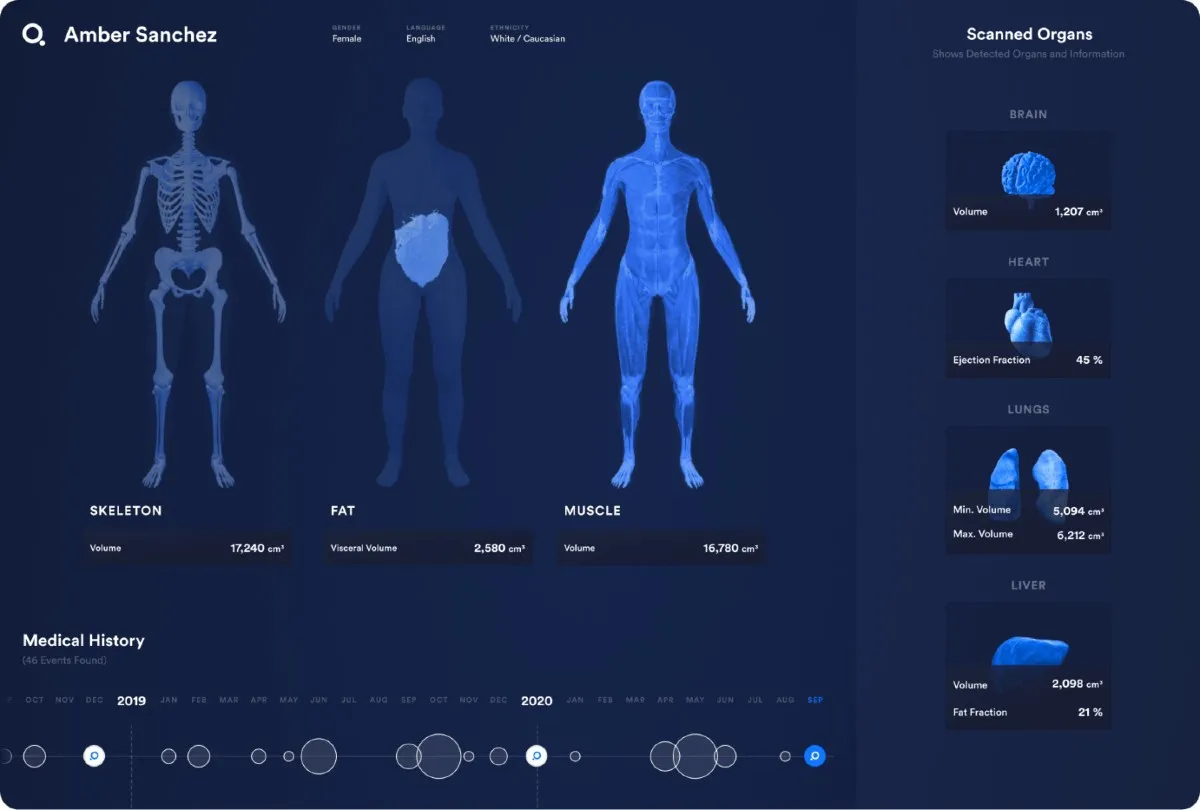
In Star Trek, where many of our ideas of future technology germinated, human beings can walk into the medbay and have their entire body digitally scanned for signs of illness and injury. Doing that in real life would, say the makers of Q Bio, improve health outcomes and alleviate the load on doctors at the same time.
The US company has built a scanner that will measure hundreds of biomarkers in around an hour, from hormone levels to the fat building up in your liver to the markers of inflammation or any number of cancers. It intends to use this data to produce a 3D digital avatar of a patient's body – known as a digital twin – that can be tracked over time and updated with each new scan.
Q Bio CEO Jeff Kaditz hopes it will lead to a new era of preventative, personalised medicine in which the vast amounts of data collected not only help doctors prioritise which patients need to be seen most urgently, but also to develop more sophisticated ways of diagnosing illness. Read an interview with him here.
Direct air capture
Through the process of photosynthesis, trees have remained one of the best ways to reduce the levels of CO2 in the atmosphere. However, new technology could perform the same role as trees, absorbing carbon dioxide at greater levels while also taking up less land.
This technology is known as Direct Air Capture (DAC). It involves taking carbon dioxide from the air and either storing the CO2 in deep geological caves under ground, or using it in combination with hydrogen to produce synthetic fuels.
While this technology has great potential, it has a lot of complications right now. There are now direct air capture facilities up and running, but the current models require a huge amount of energy to run. If the energy levels can be reduced in the future, DAC could prove to be one of the best technological advances for the future of the environment.
Green funerals
Sustainable living is becoming a priority for individuals squaring up to the realities of the climate crisis, but what about eco-friendly dying? Death tends to be a carbon-heavy process, one last stamp of our ecological footprint. The average cremation reportedly releases 400kg of carbon dioxide into the atmosphere, for example. So what's a greener way to go?
In Washington State in the US, you could be composted instead. Bodies are laid in chambers with bark, soil, straw and other compounds that promote natural decomposition. Within 30 days, your body is reduced to soil that can be returned to a garden or woodland. Recompose, the company behind the process, claims it uses an eighth of the carbon dioxide of a cremation.
An alternative technology uses fungi. In 2019, the late actor Luke Perry was buried in a bespoke "mushroom suit" designed by a start-up called Coeio. The company claims its suit, made with mushrooms and other microorganisms that aid decomposition and neutralise toxins that are realised when a body usually decays.
Most alternative ways of disposing of our bodies after death are not based on new technology; they're just waiting for societal acceptance to catch up. Another example is alkaline hydrolysis, which involves breaking the body down into its chemical components over a six-hour process in a pressurised chamber. It's legal in a number of US states and uses fewer emissions compared with more traditional methods.
Energy storing bricks
Scientists have found a way to store energy in the red bricks that are used to build houses.
Researchers led by Washington University in St Louis, in Missouri, US, have developed a method that can turn the cheap and widely available building material into “smart bricks” that can store energy like a battery.
Although the research is still in the proof-of-concept stage, the scientists claim that walls made of these bricks “could store a substantial amount of energy” and can “be recharged hundreds of thousands of times within an hour”.
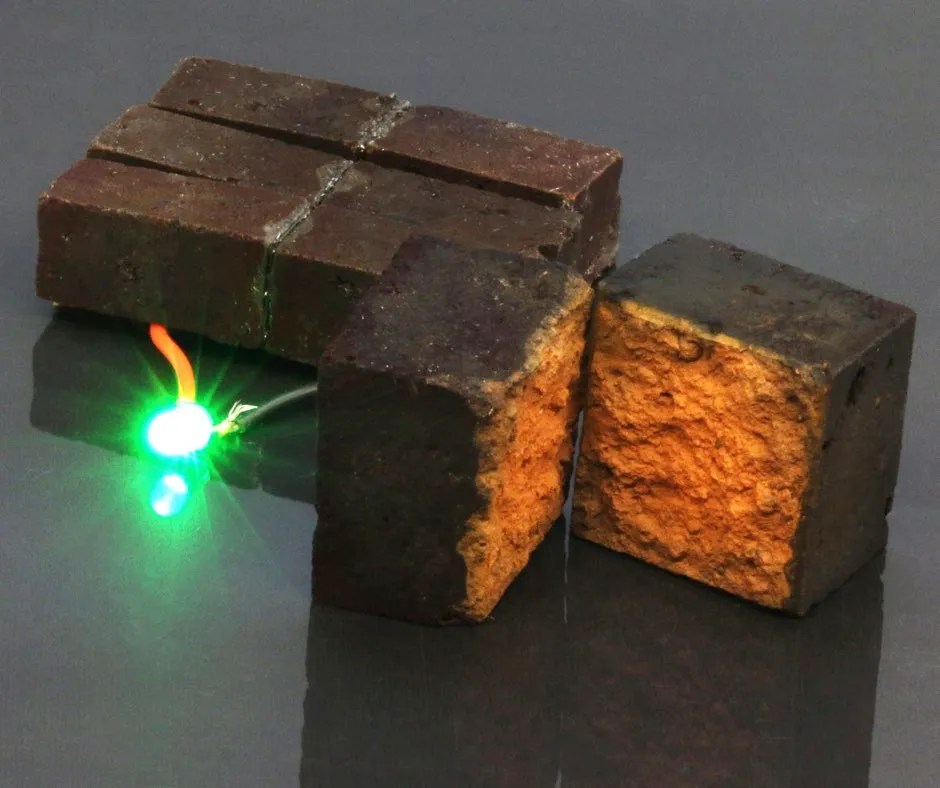
The researchers developed a method to convert red bricks into a type of energy storage device called a supercapacitor.
This involved putting a conducting coating, known as Pedot, onto brick samples, which then seeped through the fired bricks’ porous structure, converting them into “energy storing electrodes”.
Iron oxide, which is the red pigment in the bricks, helped with the process, the researchers said.
Self-healing 'living concrete'

Scientists have developed what they call living concrete by using sand, gel and bacteria.
Researchers said this building material has structural load-bearing function,is capable of self-healingand is more environmentally friendly than concrete – which is the second most-consumed material on Earth after water.
The team from the University of Colorado Boulder believe their work paves the way for future building structures that could “heal their own cracks, suck up dangerous toxins from the air or even glow on command”.
Fuel from thin air
Chemical engineers from Switzerland’s École Polytechnique Fédérale de Lausanne have created a prototype device that can produce hydrogen fuel from the water found in air.
Inspired by leaves, the device is made from semiconducting materials that harvest energy from sunlight and use it to produce hydrogen gas from water molecules found in the atmosphere. The gas could then, potentially, be converted for use as liquid fuels.
Internet for everyone
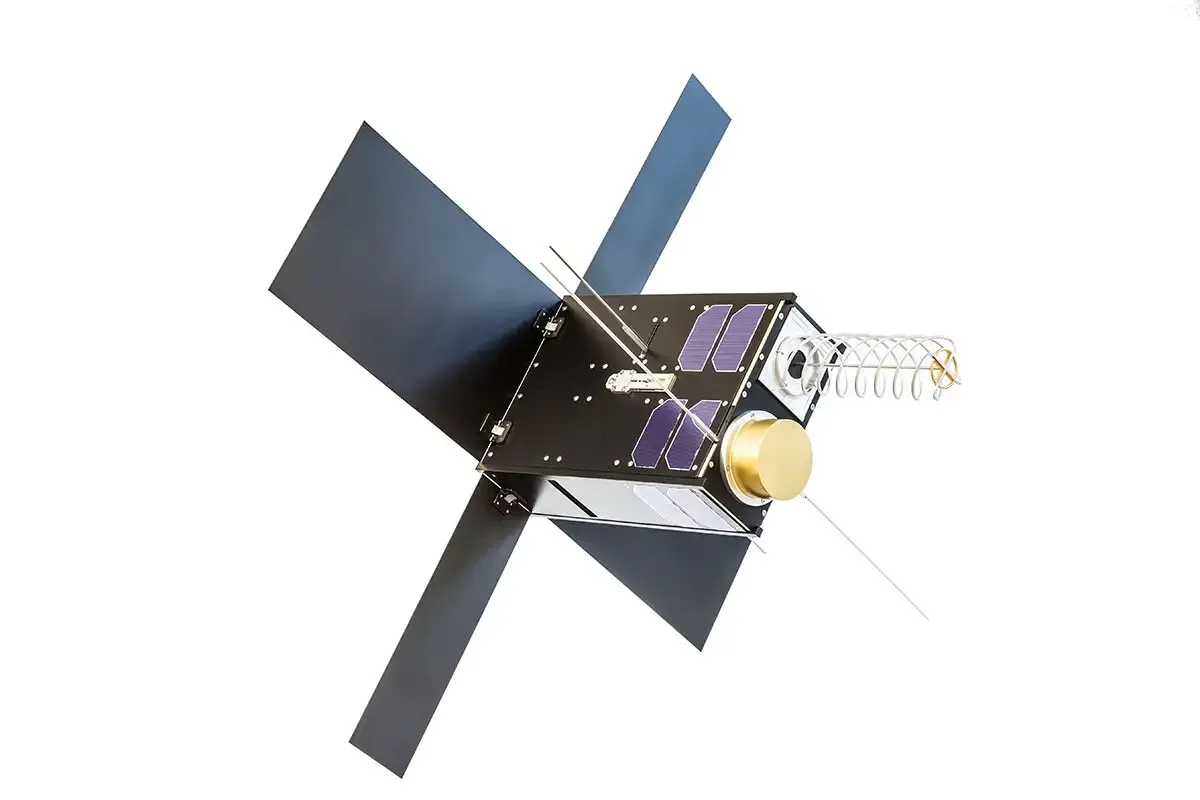
We can’t seem to live without the internet (how else would you read sciencefocus.com?), but still only around half the world’s population is connected. There are many reasons for this, including economic and social reasons, but for some the internet just isn’t accessible because they have no connection.
Google is slowly trying to solve the problem using helium balloons to beam the internet to inaccessible areas, while Facebook has abandoned plans to do the same using drones, which means companies like Hiber are stealing a march. They have taken a different approach by launching their own network of shoebox-sized microsatellites into low Earth orbit, which wake up a modem plugged into your computer or device when it flies over and delivers your data.
Their satellites orbit the Earth 16 times a day and are already being used by organisations like The British Antarctic Survey to provide internet access to very extreme of our planet.
Read more about future technology:
- Dude, where’s my flying car? 11 future technologies we’re still waiting for
- Exciting new green technology of the future
- Future tech: The most exciting innovations from CES 2022
3D-printed eye tissue
Researchers at the National Eye Institute in the US have produced retinal tissue using stem cells and 3D bioprinting. The new technique may help scientists model the human eye to better understand – and develop treatments for – diseases and conditions that affect people’s vision, such as age-related macular degeneration (AMD).
The researchers created tissue found in the outer blood-retina barrier, which is the area AMD is known to start in, by printing stem cells taken from patients into a gel and allowing them to grow over several weeks. They are currently using the tissue to study the progression of AMD and are experimenting with adding additional cell types to model more of the human eye.
Car batteries that charge in 10 minutes
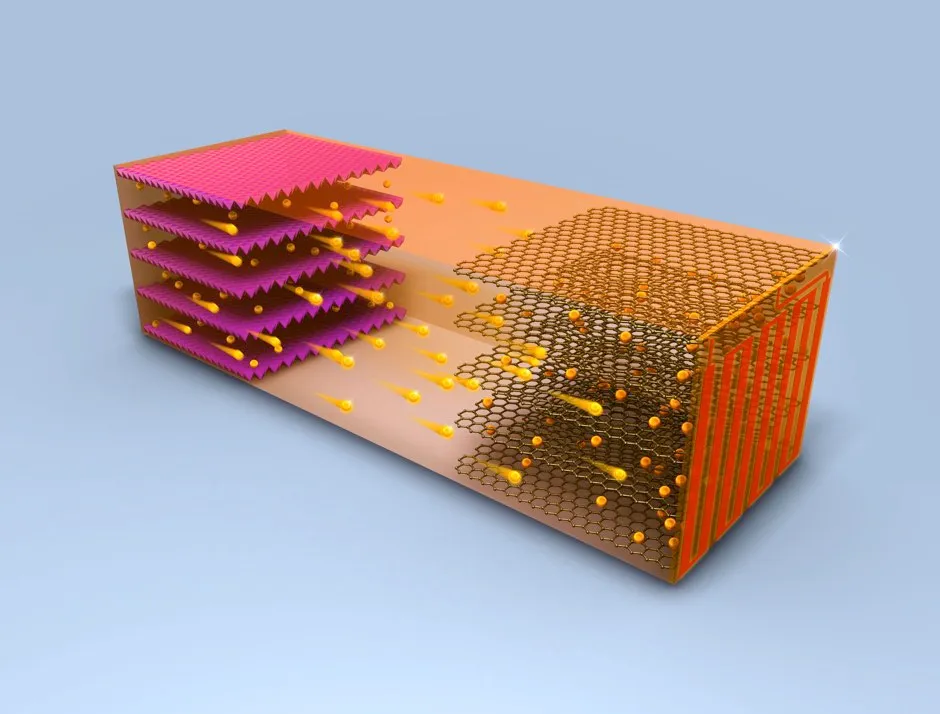
Fast-charging of electric vehicles is seen as key to their take-up, so motorists can stop at a service station and fully charge their car in the time it takes to get a coffee and use the toilet – taking no longer than a conventional break.
But rapid charging of lithium-ion batteries can degrade the batteries, researchers at Penn State University in the US say.This is because the flow of lithium particles known as ions from oneelectrode to another to charge the unit and hold the energy ready for use does not happen smoothly with rapid charging at lower temperatures.
However, they have now found that if the batteries could heat to 60°C for just 10 minutes and then rapidly cool again to ambient temperatures, lithium spikes would not form and heat damage would be avoided.
The battery design they have come up with is self-heating, using a thin nickel foil which creates an electrical circuit that heats in less than 30 seconds to warm the inside of the battery.The rapid cooling that would be needed after the battery is charged would be done using the cooling system designed into the car.
Their study, published in the journal Joule, showed they could fully charge an electrical vehicle in 10 minutes.
Artificial neurons on silicon chips
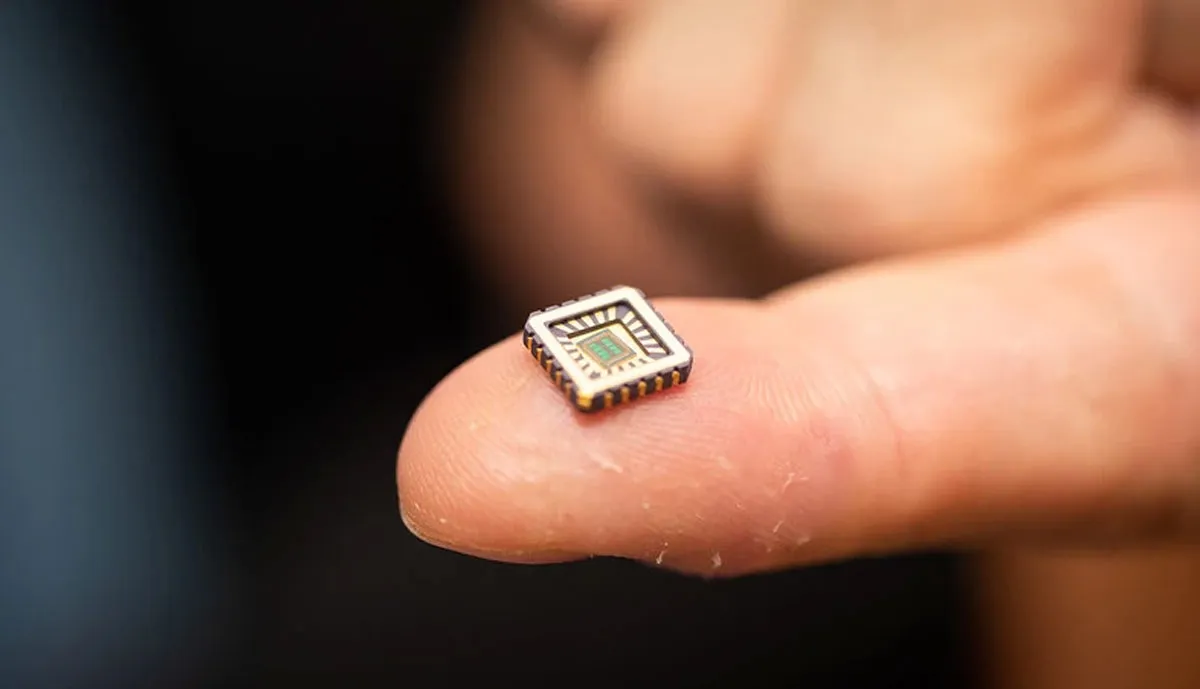
Scientists have found a way to attach artificial neurons onto silicon chips, mimicking the neurons in our nervous system and copying their electrical properties.
“Until now neurons have been like black boxes, but we have managed to open the black box and peer inside,” said Professor Alain Nogaret, from the University of Bath, who led the project.
“Our work is paradigm-changing because it provides a robust method to reproduce the electrical properties of real neurons in minute detail.
“But it’s wider than that, because our neurons only need 140 nanowatts of power. That’s a billionth the power requirement of a microprocessor, which other attempts to make synthetic neurons have used.
Researchers hope their work could be used in medical implants to treat conditions such as heart failure and Alzheimer’s as it requires so little power.
Read more: